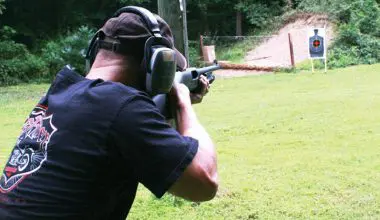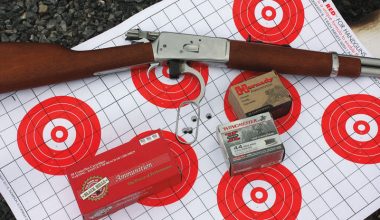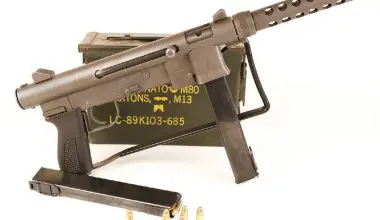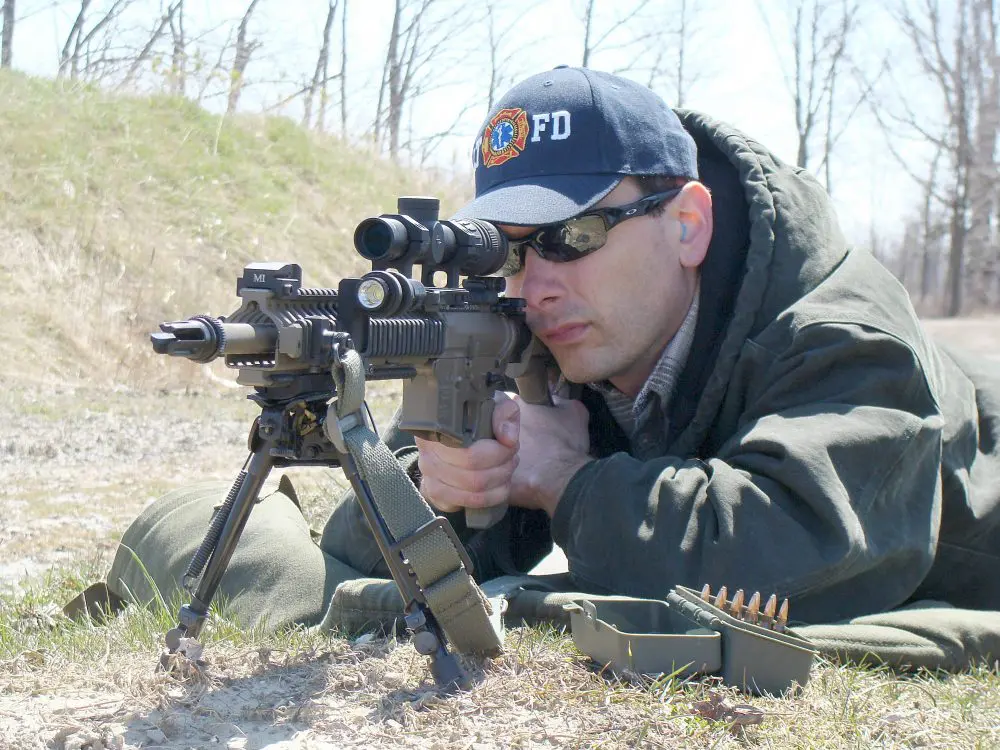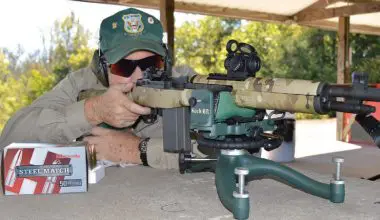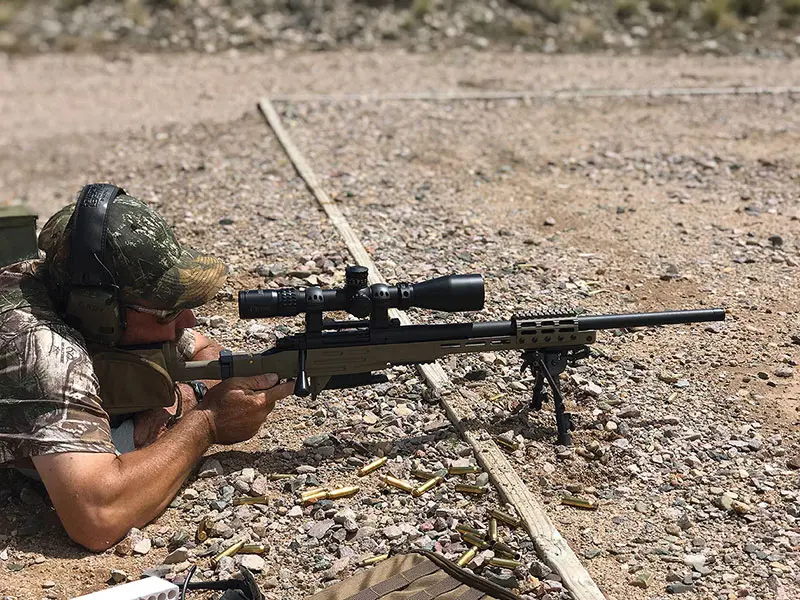
Igrew up using lever-action rifles such as the Winchester 1894, Marlin 39A, and Savage 99. Recently I acquired and use one of the greatest lever-action rifles of all time—the Winchester 1895.
The history of the Winchester lever-action rifle is well known. The Smith & Wesson Volcanic pistol was developed into the Henry rifle and then the Winchester 1866. The toggle-action Winchester 1873 was an immensely popular and influential firearm. Many of us believe the toggle action of the Winchester rifle was adopted by Maxim for use in his first machinegun—it is that efficient. The Luger toggle action also owes much to the Winchester. The Winchester 1886 was among the strongest lever-action rifles ever made.
The lovely, light and fast-handling Winchester 1892 was a popular rifle but chambered only pistol-caliber cartridges. The 1892 has plenty of leverage in its short action for rapid fire, but power is limited by the cartridges it fires.
The Winchester 1894 chambers the powerful .30-30 WCF bottleneck cartridge, a round regarded as pedestrian now, but a sensation in its day as it was the first commercially available cartridge that used smokeless powder.
The Winchester 1895 is an interesting piece of history, but like many older rifles that have been properly cared for, it is still viable for everyday use. It’s a great hunting rifle for moderate range.
Table of Contents
DEVELOPMENT OF THE 1895
Winchester and John Browning saw the new age of powerful long-range smokeless-powder cartridges. The 1894 was not the gun for the new age, so Browning designed a totally new rifle. The goal was to design an American rifle—the lever-action—for the Europeanstyle cartridge.
Browning’s newest rifle had to chamber a bottleneck cartridge with a pointed bullet. This meant an under- the-barrel tubular magazine was out of the question. The pointed bullet nose would contact the primer in front of the other cartridge in line. The receiver had to be strong enough for the increased pressure.
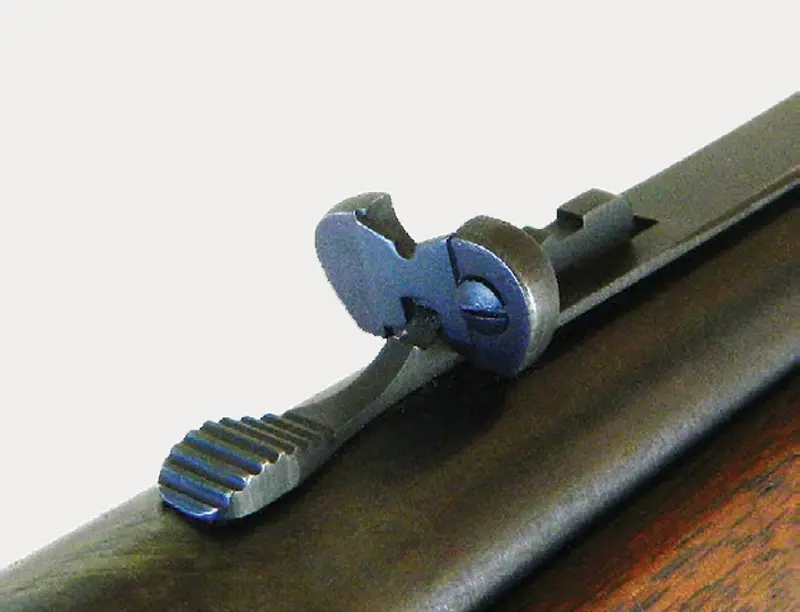
Browning designed a reliable single-column magazine placed under the receiver, giving the 1895 a unique look. It isn’t obvious at first, but the spring that powers the magazine continues beneath the barrel and into the forend. Those with an eye for detail will note that the notches in the magazine and the loading block in the bolt are closely related to the controlled feed action of the 1911 pistol.
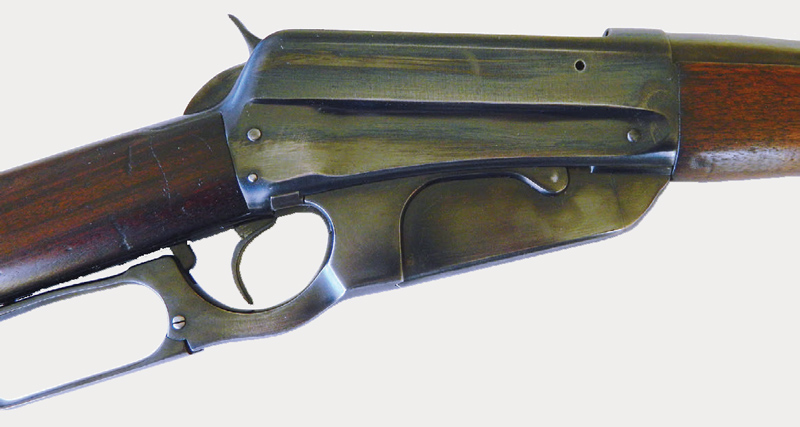
At the time, most military high-power cartridges such as the .30-40 Krag used a rim for headspace. (The .303 British and 7.62×54 Russian, also chambered in the 1895, are similar designs.) It is important for function that the magazine be properly loaded. The cartridge is pressed into the magazine with the cartridge case head depressing the follower, and the head is placed to the rear and under the magazine feed lips to properly seat the cartridge.
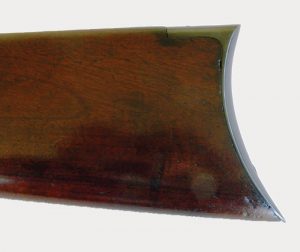
cartridge but works fine with the .30-40.
The Winchester 1895 features a bolt that locks at the rear with the Browning design cross-bolt locking lugs. The result is a rifle unlike any earlier Winchester. The majority of Winchester 1895 rifles encountered are chambered for the .30-40 Krag. The .303 was the big seller in Canada, and the famous .405 WCF—while an exciting number—wasn’t produced in the quantity the .30-caliber rifle was. The Russians received some 250,000 or more in 7.62x54mm.
After the adoption of the Springfield rifle, the 1895 was chambered in .30-06 Springfield. There is period literature referring to the Model 1895 not handling the Springfield cartridge well due to the high pressure. I have no personal experience with this version of the 1895 rifle, though the similar 7.62×54 Russian gave no problems I am aware of. Since period reports allude to headspace difficulty and set back of the bolt with the rimless .30-06 caliber, the rimmed Russian round may be superior in that regard.
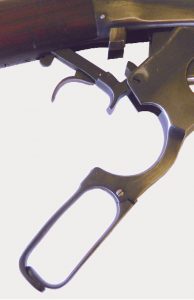
HISTORICAL USE
The 1895 rifle was used in action by the Arizona Rangers, where it earned an excellent reputation for “shooting hard” and for penetration. It was also tested by the U.S. military. The Army seemed to dislike the Winchester because it was difficult to use in prone firing, an important military consideration. While the rifle was not designed to be fed from a stripper clip, neither was the Krag Jorgensen.
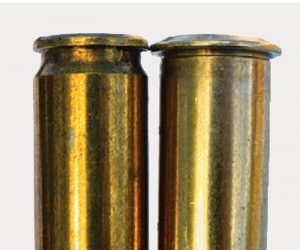
The Springfield 1903 rifle was fitted with a stripper clip, after the Mauser rifle, and the 1895 Winchester is not as accurate as the Springfield 1903. But the Winchester is an accurate rifle by any standard and capable of a good sustained rate of accurate fire.
When I obtained my rifle, I needed a bit of familiarization. It was manufactured in 1902, and features a 24-inch barrel, crescent buttplate, and iron sights. I mentioned the differences in strength and the manual of arms compared to the 1894 action. In addition, the two-piece lever takes
some getting used to. If pressure is not applied straight downward, the action will not open. The hammer features a half cock notch for safety. Be certain the magazine is properly loaded!
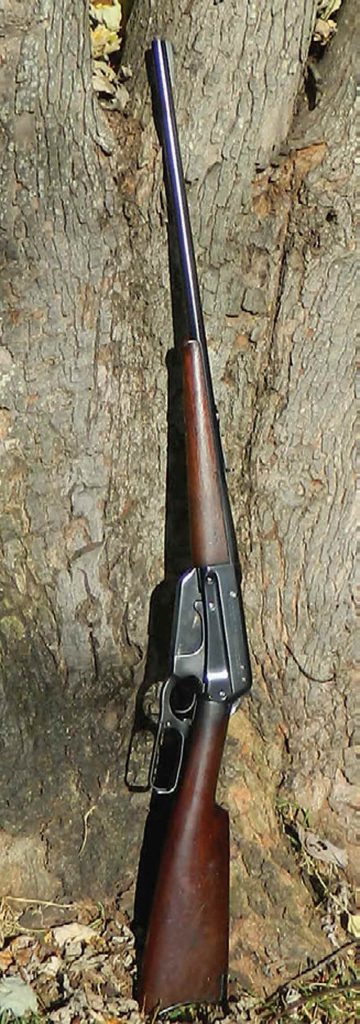
.30-40 KRAG AND HANDLOADING
The .30-40 Krag is a cartridge that doesn’t have shoulder-battering recoil but does have an excellent reputation for killing power. My late uncle Arden Williams hunted with a bolt-action Krag rifle and often commented on its effect.
The original 220-grain military load was praised for its penetration. There was no shortage of wound potential. But greater long-range accuracy motivated the move to a lighter bullet at higher velocity, resulting in the .30- 06 Springfield. The .30-40 broke over 2,000 feet-per-second (fps) with the 220-grain loading. Today manufacturers offer a 180-grain jacketed soft point loaded to 2,200 to 2,300 fps depending upon barrel length.
It’s a catchphrase that judicious handloading may increase both the power and accuracy of a loading. My handloading philosophy has been to develop loads less hot than factory loads. Both shooter and rifle profit from this course. Practice is more pleasant and accuracy is often increased. I load the cartridge to its potential for hunting use, but otherwise lighter loads are the norm. Since adopting this course, I was able to use handloads in the Winchester 1895 I had previously worked up for the Krag Jorgensen .30-40 bolt-action rifle.
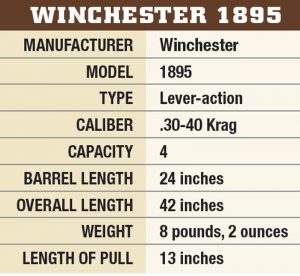
ACCURACY
Any animal in North America could be taken cleanly with the heavy bullet at 100 yards or so. The present factory 180-grain loads are accurate and reliable. For handloading, the 180-grain Hornady bullet may be pushed to 2,300 fps with 46.0 grains of IMR 4350. This loading answers my needs, so I stopped looking.
On a good day, the iron-sighted Winchester .30-40 handload will group three shots into just less than two inches at 100 yards. The occasional brilliantly smaller group indicates the rifle is more accurate than the shooter.
Winchester factory ammunition is just as accurate as my handload, no surprises there, but in deference to old steel, Winchester ammunition is a little less hot than I am able to comfortably load for the .30-40.
With the 180-grain load, a ballistic calculation shows that by sighting the rifle in to strike four inches high in relation to the point of aim at 100 yards, the Winchester is on the money at 200 yards. This makes for a useful allaround rifle. There isn’t a lot of choice in factory loads, but what is available works well.

Is the 1895 rifle practical today? You bet. It displays the superior handling qualities of the lever-action, including a good natural balance point, fast handling, and the simplicity of an exposed hammer.
The Winchester 1895 is completely reliable and needs little maintenance. It was proven in the American West in the hands of lawmen and in action in the Great War. The Winchester 1895 is a piece of history and a working rifle all in one.
